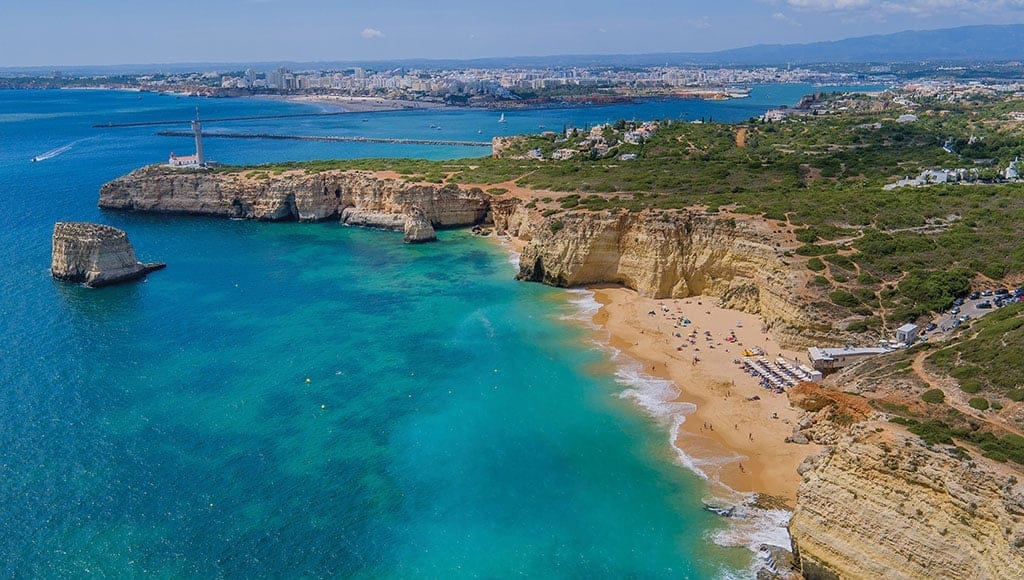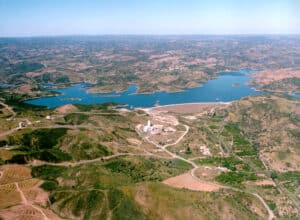ZERO environmental association says quality has deteriorated since last year
Portugal’s ZERO environmental association has warned of a worsening of water quality on the country’s beaches, noting that during the current bathing season 41 have already been ruled out of bounds and people have been advised against bathing on 46 others, most of them in the municipality of Cascais.
In a statement, the environmental association explains that its concerns arise from a comparison between the results of water quality on Portuguese beaches during this bathing season and last year.
“There are currently 664 bathing waters reported for monitoring, with a limited number of beaches showing problems, but to a greater extent than last season,” says ZERO.
The association adds that since the start of the bathing season on May 1 bathing has been discouraged and/ or prohibited on 46 beaches – 17 more than in a similar period last year.
“In these bathing areas, analyses exceeded the limits set technically at national level for at least one of the two microbiological parameters that are assessed (Escherichia coli and intestinal Enterococus),” it points out.
Also since the start of the bathing season, 41 beaches have been closed – 13 more than in 2023 and the majority for “poor quality” of water. Of these, 15 were coastal and 26 in the interior (on rivers or reservoirs).
The bathing waters with the highest number of situations of ‘water unfit for bathing’ were Matosinhos, with three unfit for bathing situations, and Parede (Cascais), Camilo (Lagos), Bitetos (Marco de Canavezes), Vieira (Marinha Grande), Molhe Leste (Peniche) and Azenhas do Mar (Sintra), each with two unfit for bathing.
The municipality of Cascais, in Lisbon district, at six beaches, had the highest number affected by “unfit quality or bans.”
ZERO also laments the existence of “flaws in information that is made available on the website of the Portuguese Environment Agency (APA)” in that “the reasons for the banning of bathing areas and the procedures by the Regional Health Delegates are not always properly clarified.
“There are 92 bathing waters without any analysis results available (14% of all bathing waters),” it explains, noting that practically all of these are in the autonomous region of the Azores. “The APA page dedicated to communicating bathing practice advisories and prohibitions (https://apambiente.pt/apa/desaconselhamentos-e-interdicoes-da-pratica-balnear) represents an improvement in the communication effort, but it is not entirely consistent with information in the Water Resources Information System.”
ZERO therefore defends the need to “ascertain causes” and, “above all, prevent contamination” on inland beaches which have been proportionally most affected.
The same goes for bathing areas that “have been advised against or banned during the current bathing season”, but which “have an excellent rating.
“In each case, it is essential to identify the source of the problems and ascertain responsibility, with the Portuguese Environment Agency and the General Inspectorate for Agriculture, the Sea, the Environment and Spatial Planning playing a decisive role,” it says.
On a positive note, the environmental association emphasises the fact that none of the beaches officially labelled ‘ZERO Pollution Beaches’ have had significant water quality problems.
“None of the 59 beaches classified by ZERO as a Praia ZERO Poluição (bathing areas where no contamination was detected in analyses carried out over the last three bathing seasons) has been affected by a ban associated with exceeding microbiological parameters,” it states. “However, it was not possible to verify this circumstance for the bathing waters of the Autonomous Region of the Azores due to the lack of information in the National Water Resources Information System.”
LUSA


























